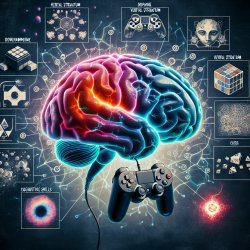Introduction
In the ever-evolving field of speech-language pathology, practitioners are constantly seeking data-driven strategies to enhance therapy outcomes. A recent study titled "Age-Related Differences in Early Cortical Representations of Target Speech Masked by Either Steady-State Noise or Competing Speech" offers valuable insights that can be translated into practical applications for improving speech recognition in children, especially in noisy environments.
The Study: A Brief Overview
The study examined how younger and older adults process speech masked by either steady-state noise or competing speech. It focused on the early cortical responses, specifically the acoustic change complex (ACC), which is a neural marker of sensory encoding. The findings revealed that younger adults benefit more from onset delays between the target speech and the masker, particularly when the masker is competing speech, compared to older adults.
Implications for Speech Therapy
Understanding the neural underpinnings of speech processing can significantly impact therapeutic approaches. Here are some key takeaways for practitioners working with children:
- Early Intervention: Introducing auditory tasks that mimic real-world noisy environments can help children develop better speech recognition skills. Early cortical processing insights can guide the design of these tasks.
- Customized Therapy: Tailoring therapy sessions to include exercises that enhance stream segregation can improve outcomes. For instance, using exercises that vary the onset delay between target speech and background noise can train children to better focus on the target speech.
- Use of Technology: Incorporating technology that simulates different auditory environments can provide children with the opportunity to practice speech recognition in varied settings, thus enhancing their adaptive skills.
Encouraging Further Research
The study highlights the importance of understanding age-related differences in speech processing. For practitioners, this means staying informed about the latest research and considering how these findings can be integrated into practice. Encouraging further research in this area can lead to more refined techniques and tools that support speech development in children.
Conclusion
By leveraging the insights from this study, speech-language pathologists can enhance their therapeutic approaches, ultimately leading to better outcomes for children. Understanding early cortical processing and its impact on speech recognition is crucial for developing effective interventions.
To read the original research paper, please follow this link: Age-Related Differences in Early Cortical Representations of Target Speech Masked by Either Steady-State Noise or Competing Speech.










